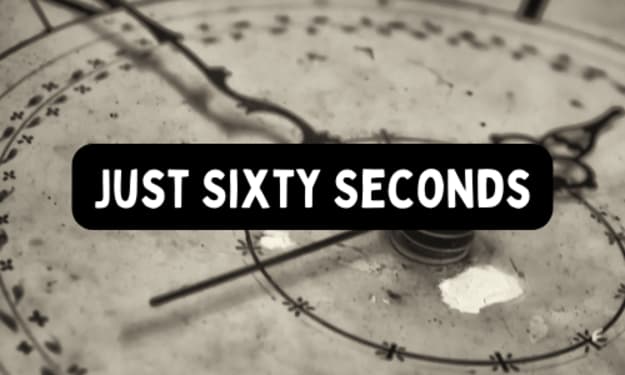Solana vs Ethereum Blockchain | Which is Better for dApps
Oodles Blockchain

The Solana blockchain is emerging as an Ethereum killer, a Bitcoin rival, and an industry disruptor. But is Solana blockchain development truly capable of dominating the DeFi and dApps industry and outclassing its competitors? Let's find out.
A Quick Glance at the Solana and Ethereum Blockchains
Solana Blockchain
Solana aims to be the house of modern Web3 decentralized apps. Compared to most of its competitors, including Ethereum, it can execute faster and cheaper transactions.
Along with utilizing the proof-of-stake consensus mechanism, it also uses a recently emerged consensus algorithm called Proof of History.
Benefits of Solana Blockchain Development
Compared to most competing blockchains, including Ethereum, Solana can execute more transactions per second with substantially lower transaction fees.
It is inexpensive and boasts a lightning-fast speed of transactions.
It can post smart contracts and has little effect on the environment. Additionally, users can stake Solana (SOL) for benefits.
Solana's shortcomings
On the Mainnet, it still needs to introduce many necessary implementations.
Solana's hardware arrangement has received criticism for not being sufficiently decentralized and inexpensive in comparison to several of its competitors.
Also, Read | Top 5 Compelling Solana Blockchain Use Cases
Ethereum Blockchain
You must comprehend a few fundamentals about the Ethereum blockchain to understand how Ethereum and Solana differ from one another. Although they resemble each other substantially, Ethereum has a long history.
Ethereum establishes a peer-to-peer network on the decentralized blockchain. It checks and securely executes "smart contracts" application code. They make it possible for participants to communicate with one another in a decentralized manner.
The blockchain platform is popular as "trustless."
Benefits of Ethereum Blockchain Development
The fact that Ethereum has the largest ecosystem in cryptocurrency and a sizable, international community is one of its most noteworthy features.
Beyond its uses as a digital currency, it serves numerous other purposes.
It is capable of handling financial transactions, carrying out smart contracts, and storing data for external applications.
Limitations of Ethereum
The extreme volatility of cryptocurrencies is one of the greatest issues with them, and with Ethereum too. The transactional expenses might occasionally be risky due to this, which can also result in substantial gains and losses.
Additionally, transactions may suffer from network congestion, which may hinder growth and drive up costs. With the most recent updates like Ethereum 2.0, Ethereum hopes to change this.
Also, Read | Ethereum Smart Contract Development | Discovering the Potential
Ethereum vs Solana | A Thorough Comparison
Release Date
Ethereum was first introduced by Vitalik Buterin in 2013. Anatoly Yakovenko originally described Solana in the year 2017.
Blockchain Consensus Protocol
Proof of Work (PoW), a decentralized consensus mechanism, is a prerequisite for Ethereum. On the other hand, Solana uses the Proof of History (POH) mechanism.
Type of Token
The native token of the Ethereum blockchain network is ether (ETH). The native token of the Solana blockchain network is Solana (SOL).
Applications
The three most popular Ethereum blockchain projects are Uniswap, Aave, and Decentraland. Star Atlas, Serum, and Audius are the Solana blockchain's most influential initiatives.
Also, Read | Why Develop DApps on Solana?
Speed of Transactions
Within six minutes of confirmation time, Ethereum offers 12–25 TPS. On the other hand, Solana provides 65,000 TPS with a potential future cap of 710,000 TPS.
Cost of Transactions
The typical transfer charge for ETH is about $2.90 per transaction. User fees on Solana start at $0.00025 for each transaction.
Transparency
Although all of the data is transparent and traceable by anybody, private information remains on the blockchain in an encrypted form on Ethereum.
While every month, Solana Foundation publishes transparency reports regarding token activities.
Also, Read | A Quick Guide to Ethereum ERC Token Standards
Capitalization of the Market
The market capitalization of Ethereum is currently approximately 136.64 billion USD. Approximately $12.8 billion is Solana's current market capitalization.
Network Volume
2,980 developers worked on Ethereum in total in 2020, while 3,920 did so in 2021. On its network, Solana has about 1,000 developers at work.
Programming Languages
Ethereum uses Ethereum Virtual Machine (EVM). Its smart contracts are mostly written in proprietary languages like Solidity (C++ inspired), Viper (Pythonic Language), Yul/Yul+ (intermediate language to EVM), and Fe (based on Rust and Python).
Contrarily, Solana favors working with more well-known programming languages like C, C++, and Rust.
Also, Read | Analyzing Solidity and Vyper for Smart Contracts Programming
Ethereum vs Solana | Which is Better for dApp and Smart Contract Development
dApp Projects Development
When it comes to DApps development, Ethereum is by far the leader because it has been active in the market longer than Solana.
Over 2,800 DApps are currently running on the Ethereum network. These DApps range widely and include, to name a few, decentralized exchanges (DEX), games, browsers, platforms for lending and borrowing cryptocurrency, payment systems, and NFT platforms.
Popular applications that use the Ethereum blockchain include Uniswap, Augur, Brave, Aave, and Compound, among others.
In terms of the number of applications hosted on their blockchain network, Solana is well behind in comparison. The potential of the Solana blockchain network lies in the fact that it has more than 350 DApps in such a short period.
The majority of NFTs and DeFi apps choose Solana. A few well-known apps based on Solana are Larix, Serum, and Raydium.
Also, Read | A Quick Guide to NFT Development on Solana Blockchain
The main distinction between the two is that Ethereum's EVM runtime is single-threaded. It means that smart contracts need to be queued. A smart contract can modify the state of the blockchain only once.
On the other hand, Solana supports parallel smart contract runtime.
Data and code remain connected in Ethereum while Solana divides them. An Ethereum smart contract contains both the code and the data that the function processes.
The smart contracts on the Solana blockchain get composed of code. All data gets relayed to the application as input.
Also, Read | Why You Should Develop a Smart Contract on Solana
Apparently, the choice between Solana and Ethereum will depend on the exact requirements of a dApp development. Both blockchain platforms have their own advantages and cons.
Solana's high-speed, low-cost network makes it an appealing alternative for fast-moving, high-volume dApps.
Whereas Ethereum's larger developer community and well-established ecosystem make it a better choice for longer-term, more complex dApp and DeFi development.
You may connect with our skilled blockchain developers to know more about which blockchain platform will be suitable for your project development.
#EthereumAppDevelopment #EthereumBlockchainDevelopmentCompany #EthereumBlockchainApplicationDevelopment #EthereumDevelopmentservices





Comments
There are no comments for this story
Be the first to respond and start the conversation.